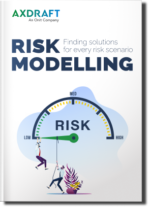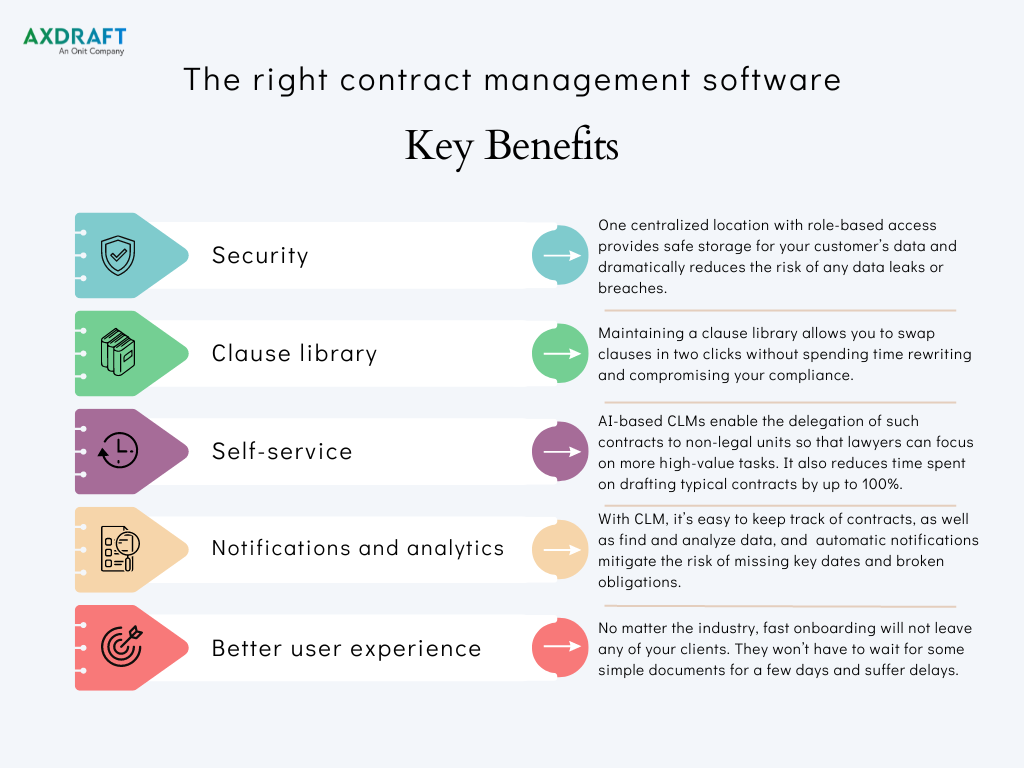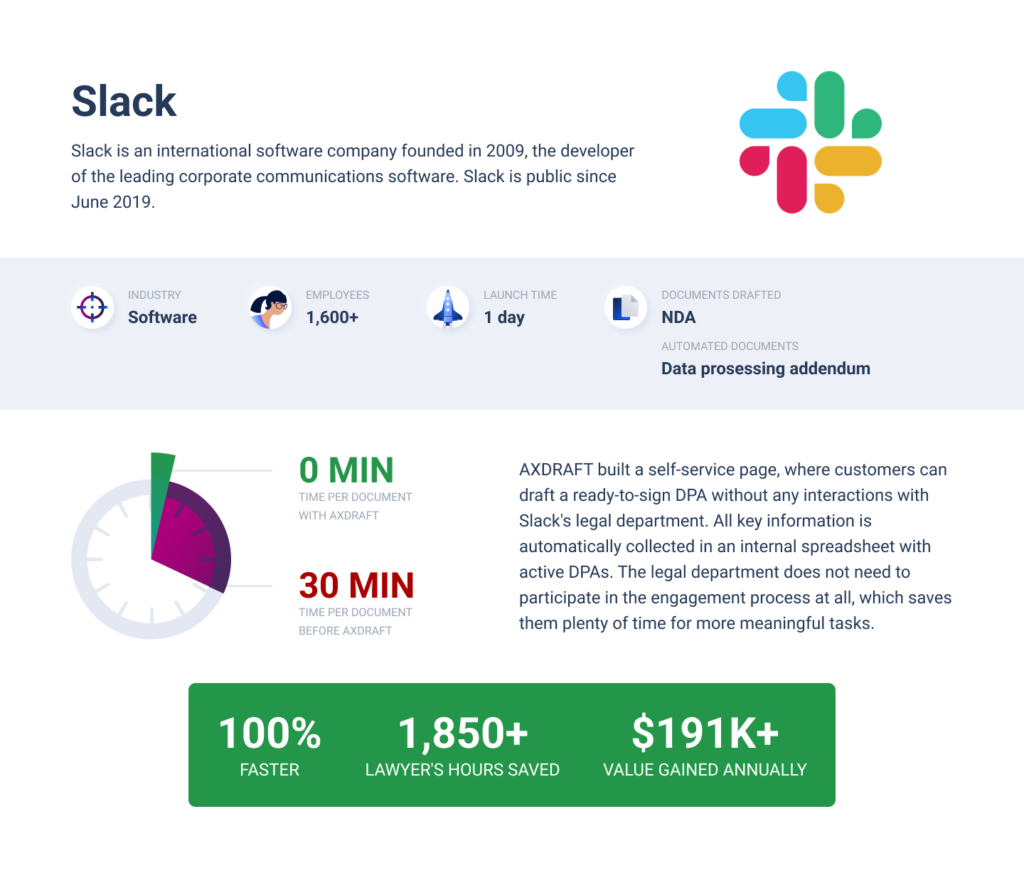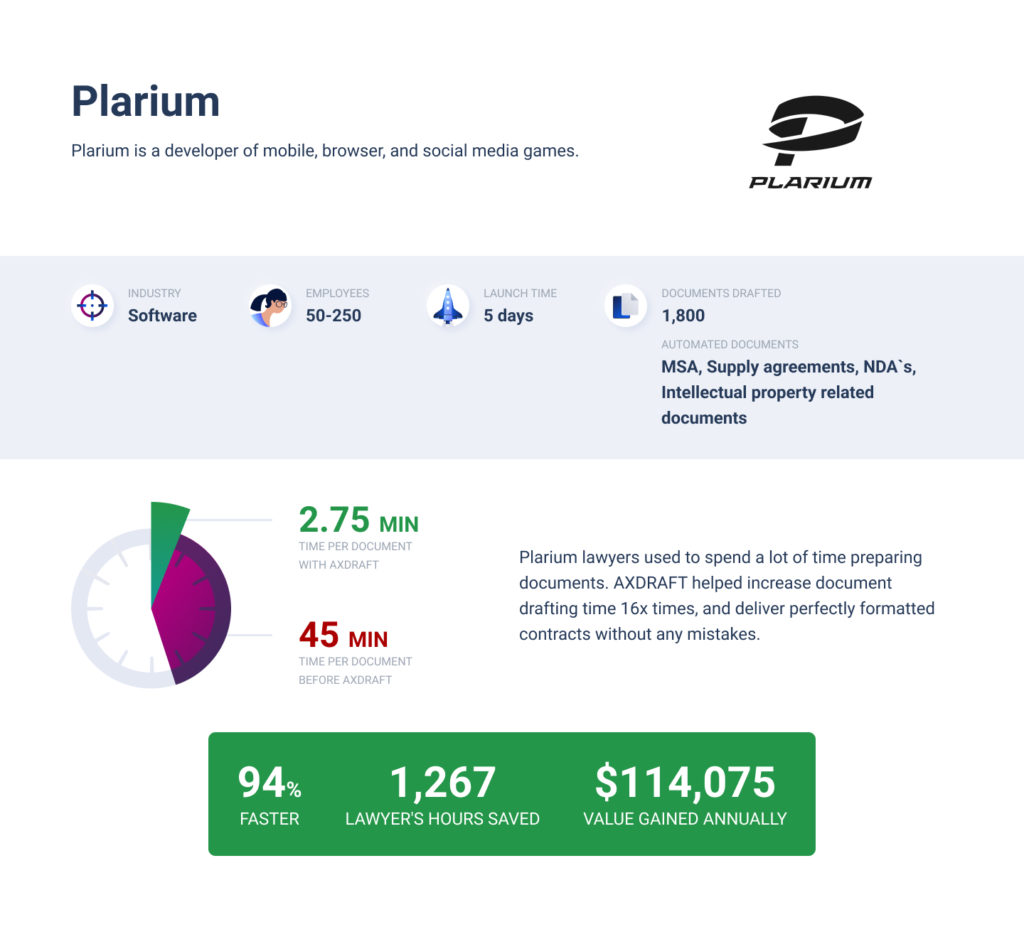Got no time to read? Listen to our blog on the go
Cybercriminals don’t have to be great hackers. All it takes is one phishing letter or one compromised device and a customer’s data can be sold somewhere on the darknet.
You may think there’s no chance for you to fall victim to a breach, but even the biggest and most famous companies get compromised. In March 2022, Hubspot reported a breach where malicious individuals accessed client data via an employee’s compromised account. And one year before that, the phone numbers, emails, and other personal information of 700 million LinkedIn users were put on sale.
During 2021–2022, there was a surge in the use of SaaS applications, but it also led to an outbreak of cybercrime and stolen data: 81% of organizations experienced a breach of sensitive data. For companies that operate solely on the internet, this poses a serious challenge as the average company with data in the cloud has a $28 million in data-breach risk.
How CLM Relates
Software-as-a-service contracts are, by nature, rental agreements. Software providers do not provide physical copies of their products, which makes transactions between parties virtual and contract-centric. Such transactions rely on trust, and to govern them effectively, SaaS contracts need to be well-negotiated, structured, and very detailed.
Companies can provide security for their application, but a lot of client information is also contained in contracts. If it’s not stored in a safe location, cybercriminals can hack it. Customer data can be compromised or used to blackmail a company, damaging the company’s reputation. It’s also important to structure contracts in a way that mitigates the risk of damages.
Modern CLMs provide a centralized storage with role-based management to ensure that only authorized users can access information. To protect customer data, good CLM systems must follow the best security standards. Client information must be encrypted so that it’s hard to hack. CLM vendors such as AXDRAFT also pay certified auditors to intentionally try to break into the system to find and fix vulnerabilities.
The question of responsibility
Sometimes data leaks happen not because of bad security, but because a customer doesn’t follow the security recommendations. In this situation, a dispute may occur about who’s responsible. That’s why the rights and responsibilities of parties should be clearly stated. This is critical, and it should not omit anything or allow any kind of ambiguity.
For such reasons, there are standardized contract templates. A template’s language won’t differ from client to client, which allows it to provide unambiguity. When it’s clear who’s responsible for what, it’s also easier to resolve disputes related to violations and breaches. It protects not only customers, but providers as well in case there are circumstances they aren’t in control of (i.e. a customer stored a written password in an easily accessed location).
Other Challenges CLM Can Resolve for SaaS Companies
Contract management has different challenges, and security is not the only area that contract lifecycle management solutions can help with for SaaS. These issues are inherent in outdated contract management, and CLM can solve them while improving security. It will greatly reduce workflow inefficiencies and allow processes to run smoothly.
Losing track of data
The more clients you have, the more information you need to track. This could be subscriptions that are about to terminate, changes to terms for some customers, or reviews of current terms if somebody claims there was a payment mistake.
If you don’t have the right tool to keep data close, you risk getting lost in data, never knowing when you need to take action for a particular contract. It may lead to a renewal of contracts that should be terminated, or vice versa, or not changing the subscription plan for a customer.
To deal with such scenarios, you need a repository with a convenient smart search, metadata that converts data into insights, and scheduled reminders. This may sound sophisticated, but from the user’s perspective, it’s just two clicks in their CLM, and you don’t have to worry about missing any dates or actions. All data is kept ready at your fingertips so that it’s easy to find and check.

Slow contracting
Manual contracting for non-legal units is full of bottlenecks. First, they have to wait until lawyers prepare and review a simple contract. If the contract needs approval from another department or a particular stakeholder, this will take even more time. All the while, the customer is forced to wait.
CLMs with self-service capabilities allow business departments to prepare simple contracts on their own without having to wait for a lawyer. And if you’re working on a complex agreement that involves negotiations, then a CLM’s advanced collaboration tools can streamline communication and speed up negotiations by 35%. Added together, this allows sales cycles to speed up by 5x.
Key Benefits

The right contract management software can combine different tools. It can replace drafting in MS Word, template libraries, manual redlines, email, cloud storage, e-sign, and some other functions. Aside from combining many tools into one, it has other benefits, such as:
- Security: Data is a valuable asset, and companies that operate using the internet may suffer from cybercrime. One centralized location with role-based access provides safe storage for your customer’s data and dramatically reduces the risk of any data leaks or breaches.
- Clause library: Maintaining a clause library allows you to swap clauses in two clicks without spending time rewriting and compromising your compliance. This is very helpful when you need to describe the functions and specifics of your services. It prevents ambiguous interpretations of the same things.
- Self-service: SaaS companies process tons of standardized documents such as NDAs. AI-based CLMs enable the delegation of such contracts to non-legal units so that lawyers can focus on more high-value tasks. It also reduces time spent on drafting typical contracts by up to 100%.
- Notifications and analytics: With CLM, it’s easy to keep track of contracts, as well as find and analyze data. It will help you make better business decisions, while automatic notifications mitigate the risk of missing key dates and broken obligations.
- Better user experience: No matter the industry, fast onboarding will not leave any of your clients. They won’t have to wait for some simple documents for a few days and suffer delays. Nobody expects long processes and bureaucracy from you if you’re a technological company.
These are the main functions that can help streamline contract management. Automation simplifies all contract-related processes allowing companies to achieve more.
Best Practices
CLM software is designed to boost contracting efficiency and remove unnecessary bureaucracy. These best practices will help you get the most out of your software.
Standardize contract authoring and execution
Drafting contracts from scratch is a time-consuming and error-prone process. Standardized templates make contracts easier to edit and review, as lawyers can focus only on the specifics of each transaction.
Pre-approved templates ensure that everything that should be in a contract is present, saving up to 82% of a lawyer’s time. On top of that, ready-to-use templates reduce the risk of errors.
Never lose track of documents and due dates
When contracts are stored across multiple locations, it’s difficult to check information about dates, terms, costs, and so on. CLM provides visibility when you can easily find what you need, as well as check any changes made. Use to-do panels to set reminders about important dates, so you won’t break obligations.
Automate your legal routine
A manual approach to contracting demands a lot of time for drafting and reviewing documents, as well as hunting down a specific signatory for approval. In-house lawyers end up getting involved in reviewing and drafting documents that don’t even require their services.
It’s much easier when data can be retrieved and inserted into new contracts. Pre-approved templates allow lawyers not to review them each time, and automated notifications notify signatories when their approval is needed.
Case Studies
A contract lifecycle management solution can be a game-changer for your business. Here are some real-life examples of how CLM can improve contracting.
Slack

Slack is a well-known corporate communications platform that provides a messaging service. With more than 1,500 employees, it’s a sizable company. However, their challenge was that it took 30 minutes to draft a simple NDA, and they involved lawyers even for drafting typical documents.
Here’s how life changed after implementing CLM:
- 100% faster document drafting (from 30 min to 0 min)
- 1,850+ lawyer’s hours saved
- $191k+ value gained annually
AXDRAFT created a service page for Slack that automatically collects all key information in an internal spreadsheet. It allows users to draft ready-to-sign NDAs without lawyers getting involved, which saves a lot of time.
Plarium

Plarium is a developer of mobile, browser, and social media games. It used to take their legal department considerable time to prepare, format, and double-check documents. On average, their lawyers spent 45 minutes drafting a document. Document automation helped Plarium cope with these issues.
Here’s how life changed after switching to a CLM:
- Drafting time dropped to 2.75 min
- 1,267 lawyer’s hours saved
- $100k+ value gained annually
Now Plarium gets to enjoy perfectly formatted and mistake-free documents 16x faster. Magic!
Bottom Line
Technology is quickly evolving, and ensuring fast workflows is critical for business. High-tech companies have to overcome their own challenges in documents, such as data protection, regulations, large volumes, and more. Each of these challenges can be addressed with a proper CLM system.
AXDRAFT is an all-in-one CLM with the ability to satisfy any need. But if you don’t need all the features available, you can select the modules you need. And if it turns out something else is necessary, it can be added. We’re also capable of building solutions on demand.
Book a demo with our team to discuss how AXDRAFT can improve your workflows, increase efficiency, boost employee satisfaction, and yield a positive ROI.
CLM software is a solution designed to streamline the whole contract lifecycle from the initial request to execution and termination/renewal. Improved contracting boosts a company’s efficiency, cuts expenses, and increases profits.
Most providers adjust their prices according to the features provided. In other words, the more documents, users, training sessions, migrations, etc., the larger the price tag.
At AXDRAFT, we do things differently. Our prices start from $600/month with no hidden costs. The number of users is always unlimited as our pricing is based on volume and added features.
The most important requirement is to choose a solution that fits your needs or can be customized to meet them. The critical features to pay attention to when choosing a CLM are:
- End-to-end process automation
- Centralized repository
- Self-service
- Capability to process complex documentation
- Real-time collaboration
- Dynamic templates editor
- Analytics and Reporting
- Integrations
- Notifications
- User experience
- Security
Regardless of size and industry, businesses run on contracts, and CLM helps streamline contract processes while eliminating mistakes, increasing efficiency, and mitigating risks. It helps the company run more effectively, analyze contract and team performance, and make informed decisions. You can take our 5-minute survey to evaluate your current contract management processes.